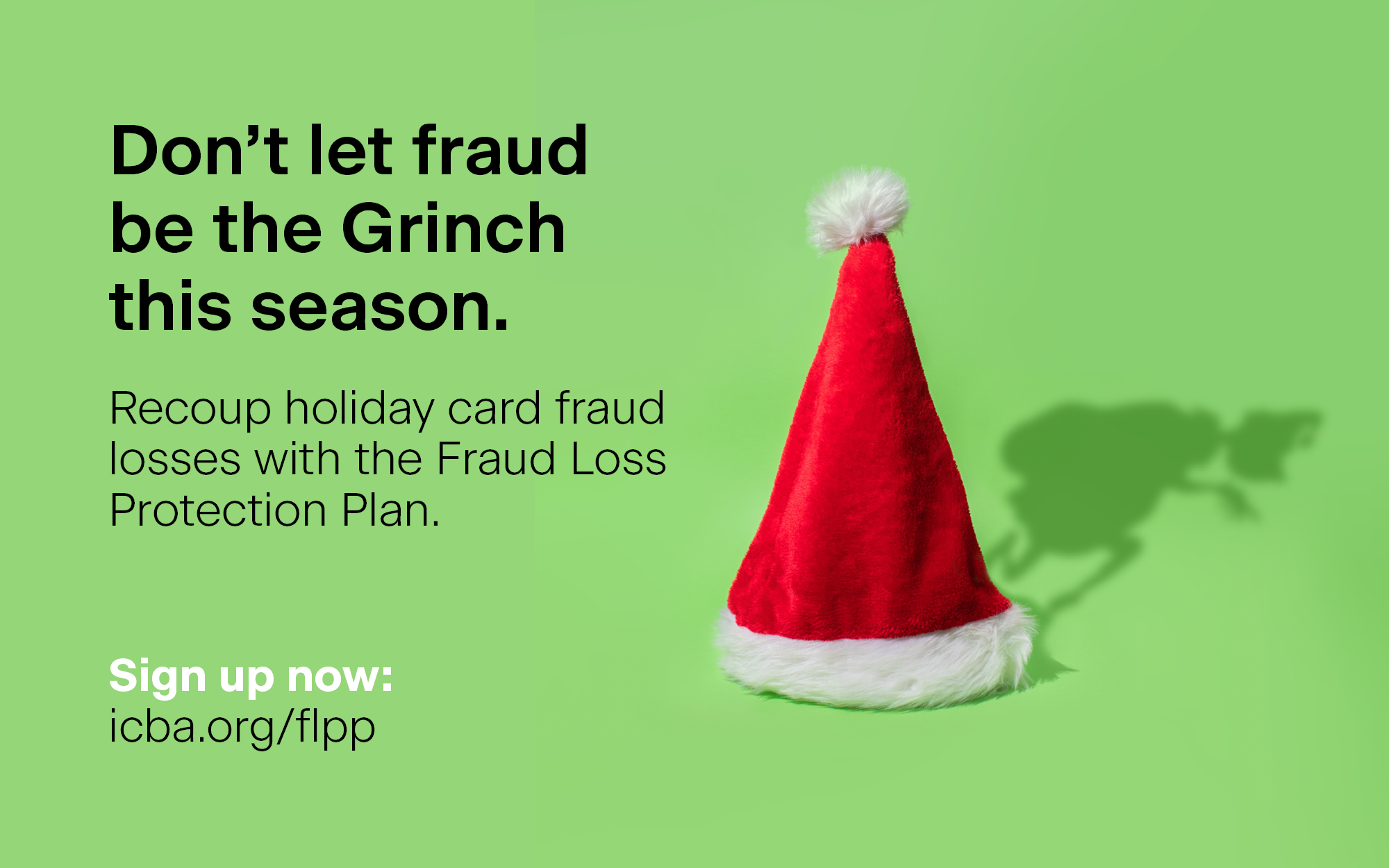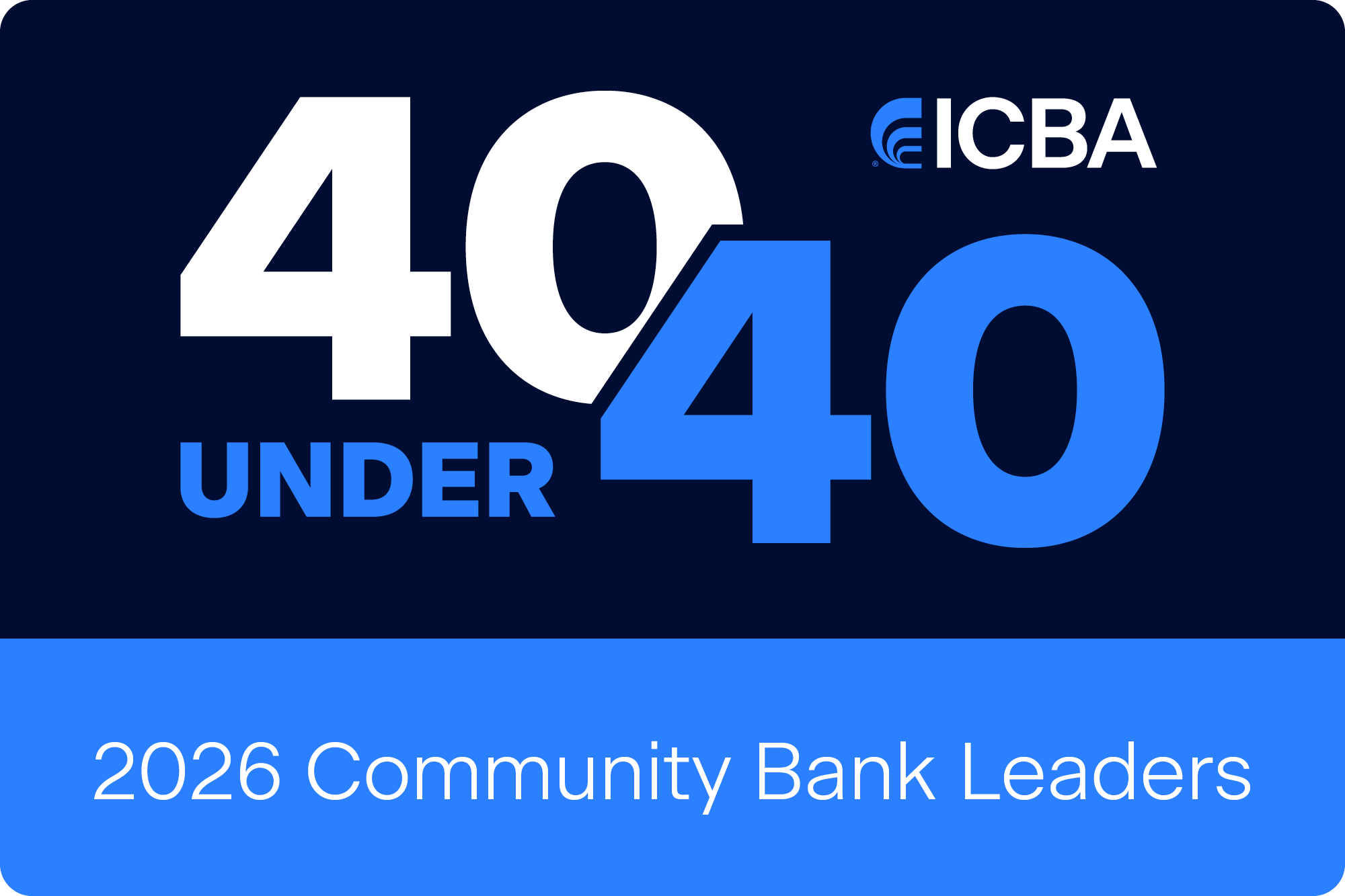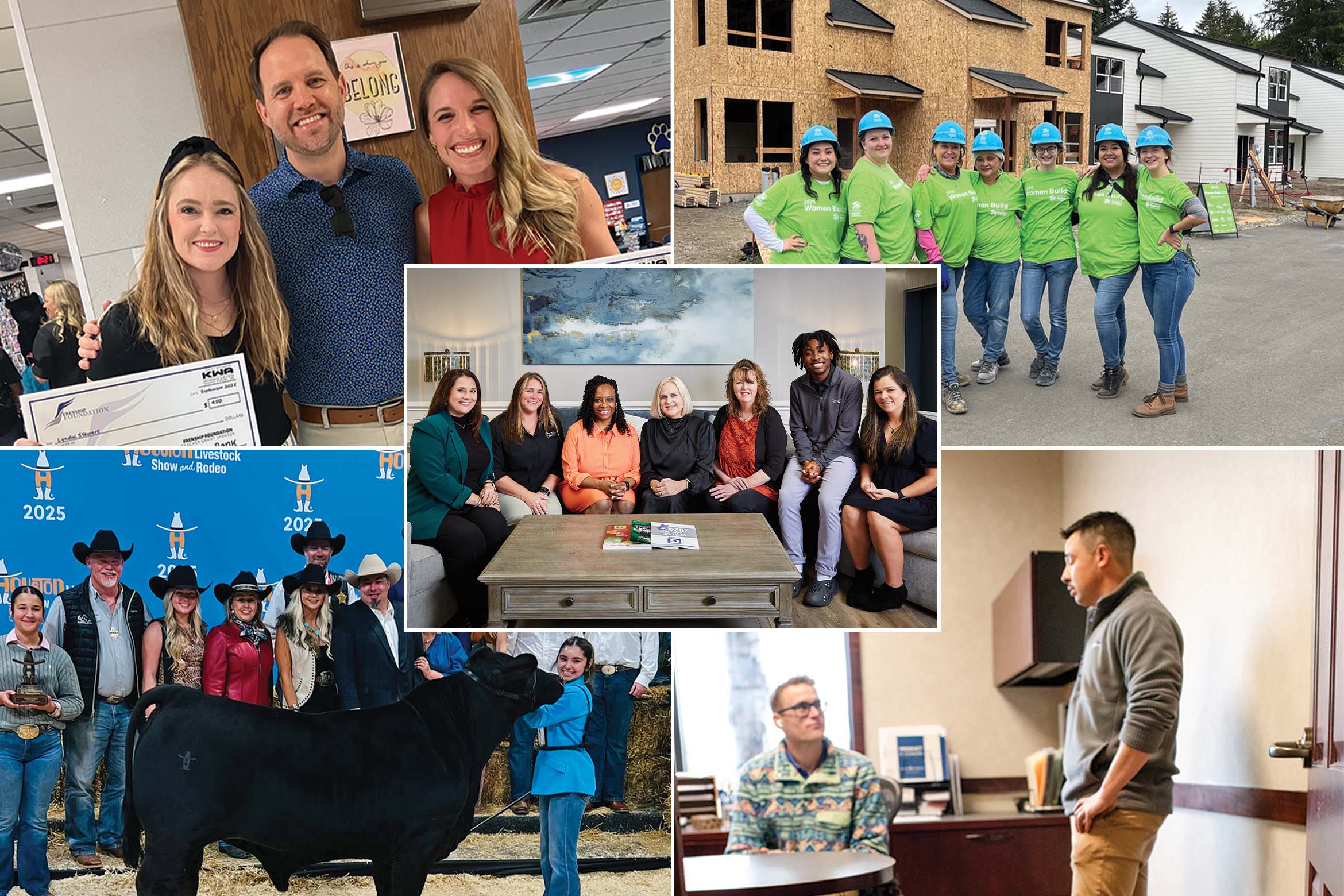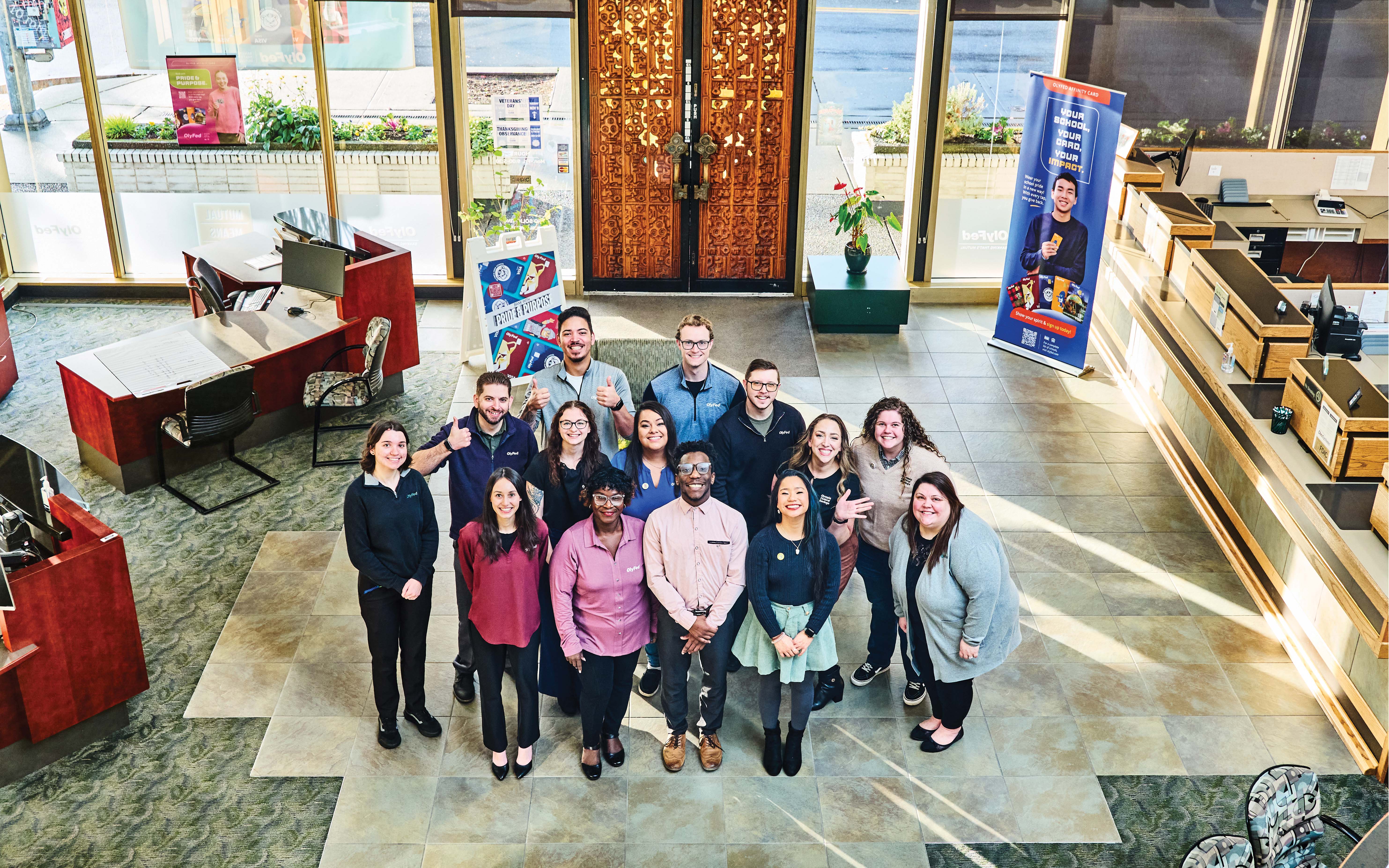Community banks do more than meet the financial needs of their customers and communities. They go above and beyond to make a difference in revitalizing, building and serving their communities. Here, we look at what three community banks are doing to improve the lives of the people they serve.
Community banks putting community first
April 05, 2023 / By William Atkinson
Community banks do more than meet the financial needs of their customers and communities. They go above and beyond to make a difference in revitalizing, building and serving their communities. Here, we look at what three community banks are doing to improve the lives of the people they serve.
Over a decade ago, 1st Bank Yuma in Yuma, Ariz., made a commitment to financial literacy outreach in its community. This resulted in the creation of the Kinder to College Financial Initiative, which teaches local students about the importance of financial literacy.
The program evolved from a partnership during the 2008–09 school year with Everfi, an organization that collaborates with businesses, organizations and educators to transform the way education is delivered and approached. Using interactive courses and modules, Everfi aims to keep students engaged and motivated. In addition, it provides data so administrators can see how the program is affecting their communities.
“With the Everfi partnership, we focused on high school students at the beginning, and later added components for K–8 students, college students, and church and civic groups,” says Wayne Gale, president and CEO of the $540 million-asset community bank.
“Our commitment to our financial literacy outreach that began over a decade ago continues to grow and thrive,” he says. “With the Everfi web-based partnership, we are able to continue to educate students even through the recent pandemic.”

According to Gale, 1st Bank Yuma’s continued and consistent support has strengthened its brand, and it is now known as the go-to source for financial literacy in its service markets.
“There is no better feeling than having customers, shareholders, educators and community members notice this fact and express their appreciation for our efforts in increasing financial literacy knowledge to all ages,” he says.
How does the program work? It varies based on the group being served.
Financial literacy in kindergarten through 8th grade
For younger students, the program consists of bank field trips and school visits. The focus is on simple economic concepts like supply and demand, budgets, and wants versus needs.
“The younger students grasp these concepts easily when they’re presented in a way they can comprehend, so we utilize many examples with ice cream and video games,” says Gale. “Once a field trip or class visit is complete, we have quizzes where gold dollars are earned for retaining the information presented.”
Over the years, 1st Bank Yuma has learned about the best way to teach the K–8 students so they remember what they learn. For example, learning wants versus needs is always the starting point with the younger students, because once they understand that concept, they can move on to learning about budgets and the costs of items and services through lessons about supply and demand.
Financial literacy in high school
For older students, 1st Bank Yuma uses a digital platform and evaluation test from Everfi. Once the students have completed their test, a bank representative visits the classroom to drive home what the bank feels is one of the most important concepts: FICO/credit scores.
“We emphasize that all of their financial obligations and contracts will be tracked for the rest of their lives and will affect their ability to obtain loans for cars and houses,” says Gale. Most insurance companies and employers also track credit scores to set premiums, the amount of interest paid on loans and to find out whether that individual is a person of character who honors their financial contract obligations.
After every school semester, Everfi sends a quarterly recap of the test results. Assessment tests are given both before and after the students take the digital classes. Since the program’s inception, 1st Bank Yuma’s students, on average, have increased their scores on assessment tests by an average of 84% in that time, according to Gale.
Once they complete the Everfi digital classes, high school students become more interested in how the financial world works, the community bank found. “We explain that everything starts with credit scores,” says Gale. “We also share that, unlike our court system where you are innocent until proven guilty, in the financial world, you are guilty until you can prove yourself innocent.”
The program also explains that before students get married, they need to make sure that their future spouses have solid credit scores, or else they could be responsible for their debts, especially in a community property state like Arizona. “This fact really seems to open their eyes to how they can get themselves into financial hardship by not understanding how the financial world works,” Gale says.
Financial literacy for college students, civic groups and churches
“Here, we focus our presentations on credit scores and the needs of each individual civic group,” Gale says. “Our overall goal is to help create generational change through financial literacy education. Simply put, we want to make sure that the communities we serve have the tools to be financially successful.”
“There is nothing better than knowing you made a difference in a student’s life and are working on creating generational change.”—Jeff Byrd, 1st Bank Yuma
For students majoring in business at local community colleges, the focus is on FICO/credit score seminars. For civic groups and churches, one focus is on concerns they may have about fraud and identity theft, as well as credit scores. “The bank individualizes the topic depending on the needs of the organization,” says Gale.
It’s not just senior management who get involved in 1st Bank Yuma’s financial literacy program; people at all levels have an opportunity to participate.
“The days that I have a bank field trip or visit a classroom are the days that that I enjoy the most,” says Jeff Byrd, the bank’s community relations officer. “I believe that the key for the students to retain information is to have fun. I know I reached the students when, after a presentation or bank field trip, the questions just keep coming. There is nothing better than knowing you made a difference in a student’s life and are working on creating generational change.”
Byrd says that this is evident with the community bank’s branches along the international border in Yuma and Nogales, Ariz. “It is exciting to see the students’ desire to learn and expand their financial knowledge base,” he says. “You can tell from their questions that they want the best life possible, and I am honored along with the bank to play a small part in their financial evolution.”
What does the future hold for the Kinder to College Financial Initiative? “The bank is constantly exploring areas to improve our financial outreach,” says Mark Rodriguez, one of the bank’s board members. “For example, after our last audit, the auditor suggested that we explore the FDIC’s Money Smart program for K–8 students. This suggestion will be incorporated as another educational tool implemented into our program outreach for the next school semester.”
Commitment to education
The schools and community in and around 1st Bank Yuma in Yuma, Ariz., appreciate the community bank’s partnership with Everfi to promote financial literacy.

“It is an investment in terms of the dedication of an asset to attain an increase in value over a period of time,” says Gina Thompson, Yuma Union High School District superintendent. “Investment requires a sacrifice of some present asset, such as time, money or effort.”
Thompson sees the Everfi relationship and the partnership between 1st Bank Yuma and the Yuma Union High School District as an example of an investment. “1st Bank Yuma has dedicated assets in the form of money, time and effort for the sole purpose of increasing the value and human condition for our students,” she says. “The commitment to the purpose is clear and evidenced by the partnership that 1st Bank Yuma has sustained over 11 years, reaching more than 21,000 students and still counting.”
A teacher from the Alice Byrne Elementary School had this to say about 1st Bank Yuma’s program: “The field trip to your bank was such a great learning experience for our young students. We appreciate you taking the time to entertain the students and make learning fun!"
However, the greatest compliment the community bank receives is when its customers come in and ask about the program or tell bank representatives how their child really enjoyed the class or field trip. Some say they wish they had a similar program when they were in school.
Choice Bank’s wishing well
In 2018, a group of leaders and influencers from $3.4 billion-asset Choice Bank in Fargo, N.D., went on a strategy and team-building retreat.
“During the retreat, the employees broke into groups and were challenged to brainstorm new initiatives that exemplified #PeopleFirst and our core value to ‘better the places we live,’ with the intent that one would be selected to bring to life,” says Melissa Block, senior vice president, marketing and communications. “The idea chosen was the Wishing Well program.”

With this program, community members can submit wishes to Choice Bank for anything big or small. Past wishes have included everything from library books for schools to cancer treatments.
Choice Bank has physical wishing wells in some of its rural locations, and while people can submit wishes by filling out applications and dropping them into the wells, these are more symbolic of the program. “The majority of wishes are submitted through our online application,” says Block. “The program is intended to help those most in need, especially those in our rural communities where they may not have access to as many resources as in some of our more urban areas.”
An internal bank committee meets at least monthly to review wishes, so they are granted on a rolling basis throughout the year, based upon a predetermined budget for the program annually.
“After four years, we continue to see a steady submission of wishes, which indicates that the program has gained traction and that it is serving a purpose in our communities,” says Block. “We have been fortunate enough to share the program and some stories with various news outlets as well, which has helped create additional awareness for the program.”
Since the program’s inception, Choice Bank has been able to grant about $100,000 in various wishes. “However, it’s not about the dollar amount,” says Block. “It is about the impact and sense of relief, no matter the amount, that we are able to bring to individuals, families, nonprofits and others in our communities.”
While she is not as heavily involved in the committee as she initially was, Block’s favorite part of her involvement has been getting the opportunity to see and hear about the wish reveals. “It’s a good feeling to know that we are able to help out others in our communities during some of their greatest times of need,” she says.
The committee itself has a few permanent members who act as the program administrators. However, there are also some rotating members who transition in and out annually. “I think this has been a great strategy for the program, as it brings fresh perspectives and representation from our various committees each year, as well as gives more employees the opportunity to participate in a program that directly carries out our core value of ‘bettering the places we live,’” says Block.
Wishing you well
One of the wishes Choice Bank’s Wishing Well program granted was to Becky Hild of Medora, N.D., who started a craft group after realizing there was a longing for connection and activity among Medora residents during the town’s off-season. Her wish was for a box of crafting supplies.

“I was so excited,” Hild says. “I went to all the ladies I could find when I got back to Medora with that box. They were just as excited as I was. It means that we can continue this. This is going to be so much fun to continue and have the funds to try something new. It’s going to be really beneficial to the group.”
Other wishes have included hearing aids, granted to a teacher in South Dakota, and new glasses for an elementary school child.
Amarillo National Bank: Putting down roots
Anyone who lives in the Amarillo, Texas, area knows that trees are somewhat of a rarity.

To counteract this problem, $8 billion-asset Amarillo National Bank has planted more than 500 trees around the five blocks of downtown Amarillo that are home to its headquarters. “Trees are worth double in the High Plains, as each tree in Amarillo had to be planted and nurtured, since originally this was a treeless plain,” says Karen Isern, a bank officer, sponsorship officer and director of celebrations.
Beautifying the downtown area has been something that the family that owns the bank has been passionate about since they settled in Amarillo. “Dad always believed that landscaping made any building look better,” says Richard Ware II, chairman of Amarillo National Bank. “We have tied our six buildings and parking lots together with heavy landscaping and trees.”
“Every time a tree is planted or landscaping becomes a priority, our city becomes more magnificent.”—Karen Isern, Amarillo National Bank
Ware had headed up efforts to get a city landscaping ordinance and felt the bank needed to set a good example. “Grass and trees add as much to our image as all of our TV advertising,” he says. “In addition, they are good for the environment by capturing CO2 and cutting urban heat in the summer.”

Amarillo National Bank has planted hundreds of trees over the years. “One summer day a couple of years ago, I walked all over downtown and counted, literally pointed at, each tree, and came up with the number 499,” says Isern. “This means that I need to make that trip again, as we’ve added a lot more since that census of trees.”
This number only includes the trees planted downtown. “Every branch is fully landscaped with trees, too,” she says.
Customers and the community have taken notice. “Our customers compliment our landscaping,” Isern says. “Employees walk and eat lunch under the shade, and environmentalists appreciate our efforts in the ‘greening of Amarillo.’ Families and young couples often have photo sessions among the trees and the red heart in our Heart Park in the center of Amarillo.”
In the future, according to Isern, Amarillo National Bank will continue to water and feed each of the trees and heavily landscape all future branches and buildings. “Every time a tree is planted or landscaping becomes a priority, our city becomes more magnificent,” she says.
Subscribe now
Sign up for the Independent Banker newsletter to receive twice-monthly emails about new issues and must-read content you might have missed.
Sponsored Content
Featured Webinars
Join ICBA Community
Interested in discussing this and other topics? Network with and learn from your peers with the app designed for community bankers.
Subscribe Today
Sign up for Independent Banker eNews to receive twice-monthly emails that alert you when a new issue drops and highlight must-read content you might have missed.
News Watch Today

Join the Conversation with ICBA Community
ICBA Community is an online platform led by community bankers to foster connections, collaborations, and discussions on industry news, best practices, and regulations, while promoting networking, mentorship, and member feedback to guide future initiatives.













